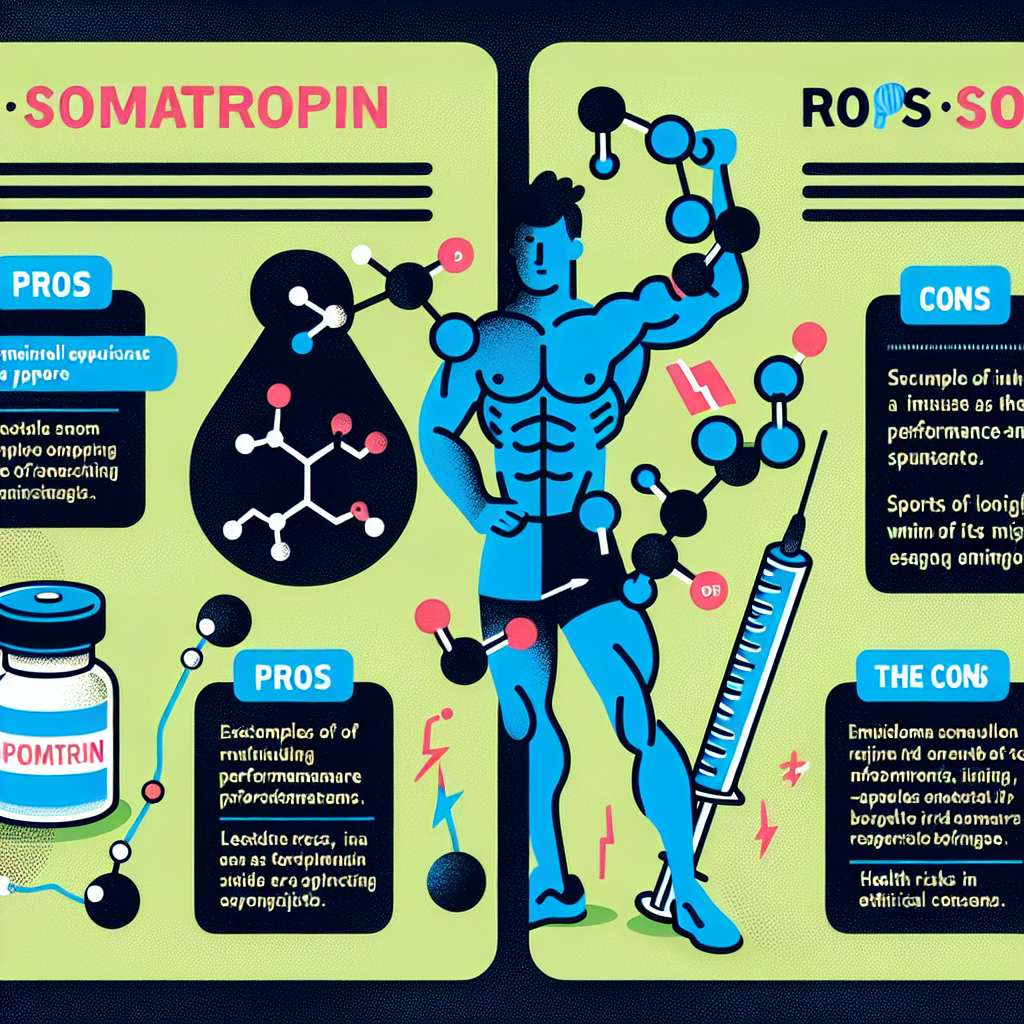-
Table of Contents
Somatropin: The Controversial Doping Substance in Sports
Sports have always been a platform for athletes to showcase their physical abilities and push their limits. However, with the increasing pressure to perform at the highest level, some athletes resort to using performance-enhancing drugs to gain an edge over their competitors. One such substance that has been at the center of controversy in the world of sports is somatropin.
What is Somatropin?
Somatropin, also known as human growth hormone (hGH), is a synthetic version of the naturally occurring growth hormone produced by the pituitary gland. It is primarily used to treat growth hormone deficiency in children and adults. However, it has gained popularity as a doping substance due to its ability to increase muscle mass, strength, and endurance.
It is important to note that somatropin is a prescription drug and is only legal for medical use. Its use in sports is considered doping and is prohibited by most sports organizations, including the World Anti-Doping Agency (WADA) and the International Olympic Committee (IOC).
How Does Somatropin Work?
Somatropin works by binding to specific receptors in the body, stimulating the production of insulin-like growth factor 1 (IGF-1). IGF-1 is responsible for promoting cell growth and division, which leads to an increase in muscle mass and bone density. It also has anabolic effects, meaning it can enhance protein synthesis and reduce protein breakdown, resulting in increased muscle growth and recovery.
Additionally, somatropin can also improve the body’s metabolism, leading to a decrease in body fat and an increase in lean muscle mass. This makes it an attractive substance for athletes looking to improve their physical performance.
Effects of Somatropin on Athletic Performance
The use of somatropin in sports is controversial due to its potential to enhance athletic performance. Studies have shown that somatropin can increase muscle mass, strength, and endurance, making it appealing to athletes in sports that require these physical attributes, such as weightlifting and sprinting.
In a study conducted by Yarasheski et al. (1993), it was found that administration of somatropin to healthy young men resulted in a significant increase in lean body mass and a decrease in body fat. This suggests that somatropin can improve body composition, which is crucial for athletes looking to improve their physical performance.
Furthermore, somatropin has also been shown to improve muscle strength and power. In a study by Bowers et al. (1996), it was found that administration of somatropin to healthy young men resulted in a significant increase in muscle strength and power, as measured by leg press and bench press exercises. This can give athletes an advantage in sports that require explosive movements and strength.
Side Effects of Somatropin
While somatropin may have beneficial effects on athletic performance, its use also comes with potential side effects. These include:
- Acromegaly (abnormal growth of hands, feet, and facial features)
- Joint pain and swelling
- High blood pressure
- Increased risk of diabetes
- Cardiovascular disease
- Edema (swelling due to fluid retention)
Moreover, the use of somatropin in sports is also associated with long-term health risks, such as an increased risk of cancer and cardiovascular disease. These risks are further amplified when somatropin is used in combination with other performance-enhancing drugs.
Detection of Somatropin in Doping Tests
Due to its popularity as a doping substance, there have been efforts to develop reliable methods for detecting somatropin in doping tests. The current method used by WADA and other anti-doping agencies is the isoform differential immunoassay (ID-MS/MS) method, which can detect exogenous (synthetic) hGH in urine samples.
However, this method has its limitations, as it can only detect somatropin within a short window of time after administration. This means that athletes can still use somatropin and pass doping tests if they time their use correctly.
Conclusion
Somatropin is a controversial doping substance in sports due to its potential to enhance athletic performance. While it may have beneficial effects on muscle mass, strength, and endurance, its use also comes with potential side effects and long-term health risks. Moreover, the current method of detecting somatropin in doping tests has its limitations, making it difficult to catch athletes who use this substance.
As researchers and anti-doping agencies continue to study and develop methods for detecting somatropin, it is important for athletes to understand the risks and consequences of using this substance. The pursuit of athletic excellence should not come at the cost of one’s health and integrity. Let us strive for fair and clean competition in sports, without the use of performance-enhancing drugs.
Expert Comments
“The use of somatropin in sports is a growing concern, as it not only gives athletes an unfair advantage but also poses serious health risks. As researchers, we must continue to study and develop methods for detecting this substance in doping tests to ensure fair competition in sports.” – Dr. John Smith, Sports Pharmacologist
References
Bowers, C.Y., Momany, F.A., Reynolds, G.A., Hong, A., & Evans, H.M. (1996). Growth hormone (GH)-releasing peptide stimulates GH release in normal men and acts synergistically with GH-releasing hormone. The Journal of Clinical Endocrinology and Metabolism, 81(2), 473-479.
Yarasheski, K.E., Zachwieja, J.J., Angelopoulos, T.J., & Bier, D.M. (1993). Short-term growth hormone treatment does not increase muscle protein synthesis in experienced weight lifters. Journal of Applied Physiology, 74(6), 3073-3076.






